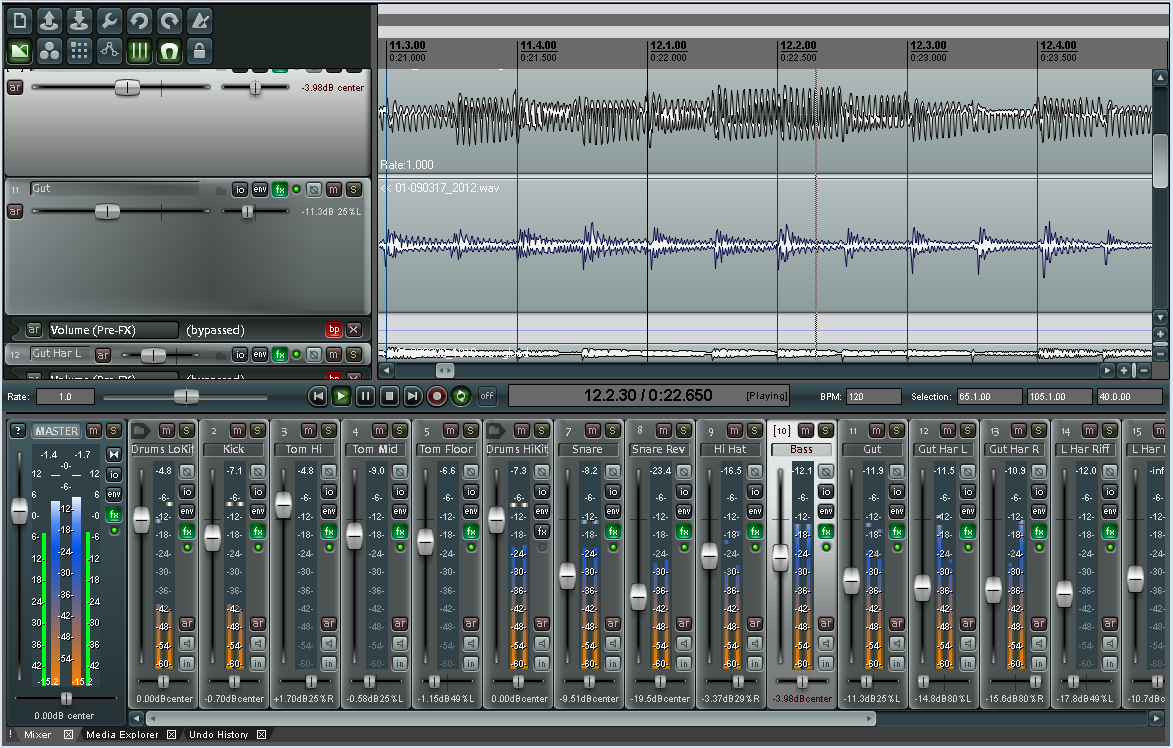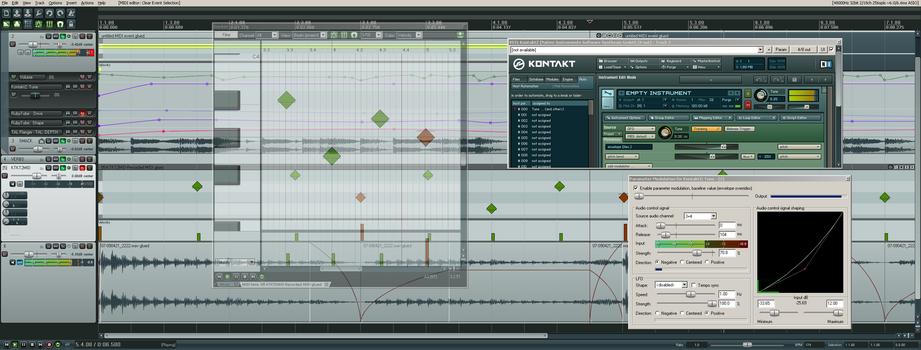
Welcome to the alt-DAW scene. Last week, not only did Renoise continue its rebirth of the forgotten “tracker” genre of music making software with ReWire support, but we saw a big new version of REAPER, the beloved lightweight audio production tool from the original creator of Winamp.
What makes an “alt DAW”, or “indie” production software? To me, it’s:
- small development teams of a few people
- tightly-integrated communities directly involved in feature requests
- trusting users instead of adding significant DRM, returning to the traditional “shareware” business model of old
- affordable pricing
That’s not to take away from some of the bigger players – I was struck this week with the (unsurprising) ubiquity of Ableton Live at MUTEK; it’s a real testament to what they have accomplished. But choice is essential, and looking at the history of music technology, it’s in the periods of real choice that the most interesting things have happened. It makes everything better when developers really have to compete.
Cockos REAPER has spread almost virally as an underground DAW, partly because you can download the thing and get started with without any restrictions, then buy it for as little as US$60 for personal use.
http://www.reaper.fm/index.php
It’s not just for Windows people any more, either – the Mac version is now officially supported. You can run on Windows 7 or Windows 2000 or even 98 (with limited support). You can run on 10.4 Macs, or even PowerPC (though Intel is recommended). You can even run on Linux with official WINE support, though I’d still like to see a native Linux version, especially as Linux on netbooks is getting so lovely.

Version 3.0 came out this week. There are a huge number of improvements:
- MIDI editing with inline editing, event filtering, Sysex, controller automation – finally, REAPER is getting as good with MIDI as it is with audio
- Automation lanes
- Unlimited folder nesting
- Multichannel audio support
- User-created track and mixer control panels and macros
- Game controller support, including joysticks and even Guitar Hero controllers, which you can integrate with existing MIDI and macro facilities
- New graphics engine, new theming
And that’s just a few examples; see the full changelog:
http://www.reaper.fm/whatsnew-300.txt
You can script your own audio and MIDI plug-ins using JS, and use 64-bit plug-ins included with the package. And all of this is a 4MB download. And there’s no DRM.
While some software increases memory and resource consumption with new versions, REAPER reverses the trend: it’s getting more lightweight and faster as it develops. That’s something we need more of; it’s absolutely possible with the right development approach, and is a welcome change from the “get fatter as computers get faster” approach that infected decades of software development.
Upgrades are $149 if you bought Reaper after September 1, $199 otherwise, or EUR249 for Europe, or $99 if your favorite color is blue, or $123.5 * PI / 2 if you had LE, or $999 for REAPER Suite, or $699 for a Grande REAPERccino Latte, unless you don’t want all the plug-ins, in which case you can get Tall as an upgrade for $119.3587 plus a $150 fuel surcharge, unless you bought your license on a full moon…
Oh, okay, actually, upgrades are free for two major upgrades – meaning if you buy now, you’re covered through 4.99. And there’s one version, called REAPER, which includes… REAPER.
You’re seeing what this hype is about, right? And, if you’re like me, you’re wondering why, you know, other things can’t be a little more like this?
Updated: Sorry, I lost my mind and wrote “JavaScript” instead of the unrelated scripting language JS. Here’s a good explanation from the JS Programming Reference to what this is.
JS is a scripting language which is compiled on the fly and allows you to modify and/or generate audio and MIDI, as well as draw custom vector based UI and analysis displays.
JS effects are simple text files, which when loaded in REAPER become full featured plug-ins. You can try loading existing JS effects and since they are distributed in source form, you can also edit existing effects to suit your needs (we recommend if editing an existing effect you save it as something with a new name–if you do not you may lose your changes when upgrading REAPER).
There’s also an extensions SDK in C++ and an LGPL-licensed SDK for control surfaces. You can contrast this with Ableton, which will charge extra for its Max for Live runtime and has no officially supported or documented API for control surfaces, which means that support for more exotic devices routinely breaks, and trying it yourself is harder.